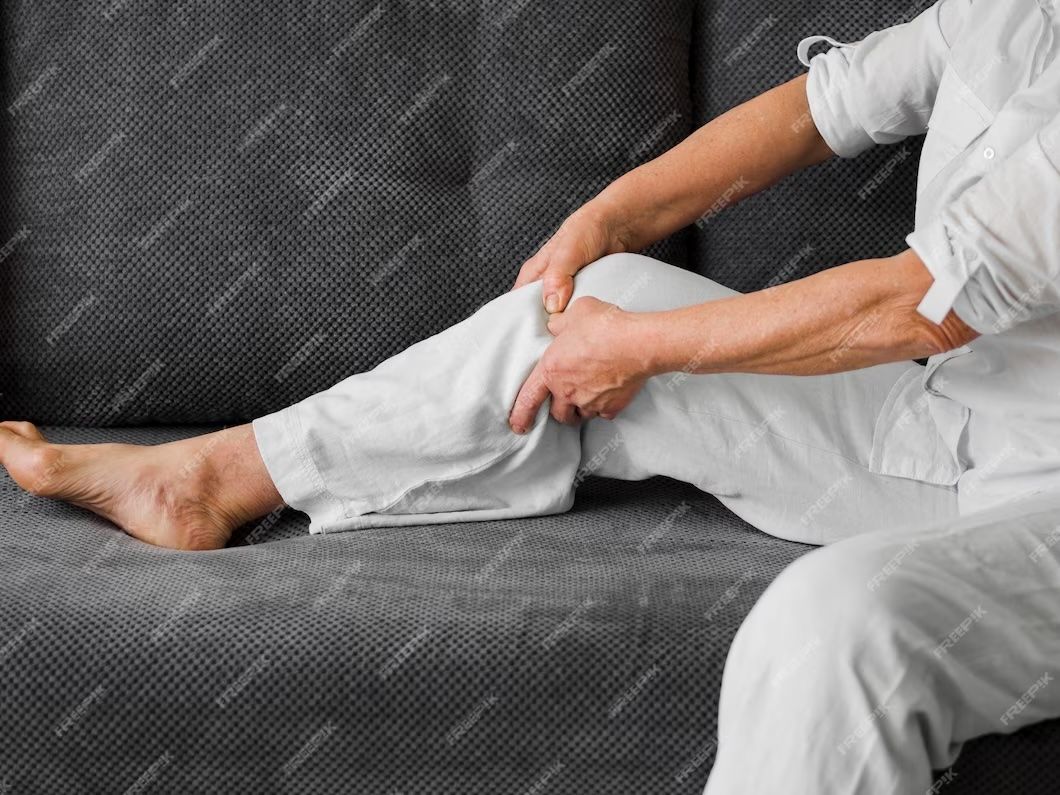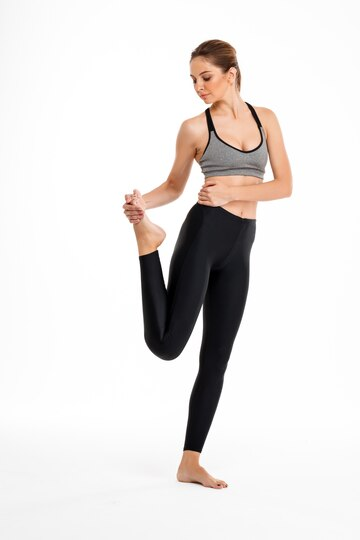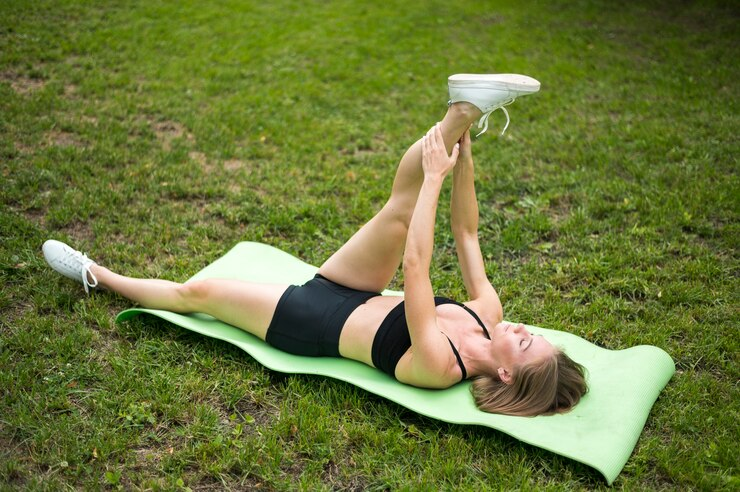Top Stretches for Knee Pain: Techniques for Soothing Discomfort
By Nigel ChuaKnee pain affects people of all ages and lifestyles, stemming from injuries, overuse, or wear-and-tear knee joint conditions such as knee osteoarthritis. In Singapore, over 70% of people are at risk of various knee joint problems, with a high chance of developing lifetime knee pain.

Fortunately, a treatment program that includes stretching exercises helps relieve knee pain. Knee pain physiotherapists provide treatment plans tailored to specific needs to improve knee health. This includes targeted exercises, manual therapy, and knee joint mobilization techniques as part of rehabilitation.
Phoenix Rehab stands out as a top provider of knee physio treatment plans in Singapore, setting a high standard for rehabilitative care. Their comprehensive care provides education and guidance throughout your knee health journey.
In this article, we will look into some of the best stretches recommended by physiotherapists and healthcare professionals to ease knee pain. We will also explore techniques to soothe discomfort, improving overall quality of life.
How Stretching Exercises Help with Knee Pain
Your knee joint actively facilitates activities like walking, squatting, sitting, and maintaining a stationary standing position. Constantly experiencing knee pain and joint discomfort can significantly impede your ability to lead a quality life.

Knee strengthening exercises and gentle, low-impact stretches on your lower body help reduce knee pain. Below are certain stretches for knee pain that help reduce stress in the affected leg and improve knee strength and mobility.
Top Stretches for Knee Pain
The following stretches target the lower body and muscles on the lower legs and calf muscles. Mind the starting position and ensure proper alignment to maximize the effectiveness of each stretch while minimizing the risk of injury.
Lower Body Exercises for Knee Pain
Prepare your muscles and joints for stretching before embarking on this exercise with a proper warm-up session lasting five to 10 minutes.
Once adequately warmed up, perform these stretches and integrate them into your routine at least four to five times per week.
1. Quadriceps Stretching Exercises
A quadriceps stretch targets the front of your thigh muscles and improves the flexibility of your hip muscles.

The starting position would be standing up with legs straight, and one hand against a wall or chair opposite you for balance. Bend one knee so your foot reaches your glutes. Grab one foot with your left hand and gently pull it towards your buttocks until you feel a comfortable stretch in the front of your thigh.
2. Hamstring Stretching Exercises
You should sense the hamstring stretch extending from the back of your leg to the base of your glutes. Sit on the floor with your right leg straight, knees straight, and legs bent. Extend your arms and reach towards your right foot, keeping your back straight.

3. Heel and Calf Stretching Exercises
This stretch focuses on the lower leg muscles, particularly targeting the calves. Stand facing a wall with your hands on the wall at shoulder height. Step your right foot back and press your right heel into the floor until you feel a stretch in your calf.

4. IT Band Stretching Exercises
Stand with your feet hip-width apart. Cross your left leg behind your right leg, then reach your left arm overhead toward the right side, bending your torso to the right. You should feel a stretch along the outer side of your left leg.
Breathe deeply and evenly throughout each stretch, and never force your body into a position that causes pain. Gradually increase the intensity over time as your muscles become more flexible.
For all exercises, hold for 30 seconds, then switch sides.
Strengthening Exercises for Knee Joint
In addition to stretching, knee strengthening exercises can help improve joint stability and reduce pain. Here are some effective exercises to try.
5. Straight Leg Raises
Lie on your back with one leg bent and the other leg straight. Slowly raise the straightened leg to the height with your knees bent, then slowly bring it back down.
A straight leg raise exercise for a sore leg helps strengthen the muscles around the joint and hip flexors.
6. Calf Raises
Stand upright with feet flat on the floor, positioned hip-width apart for stability. Engage your core muscles to maintain balance, then slowly lift your body weight onto the balls of your feet, feeling the contraction in your calf muscles.
Hold this position briefly to maximize muscle engagement, then gradually lower your heels back to the starting position. Repeat on the other foot.
7. Half Squats
Stand with your feet shoulder-width apart and lower yourself into a half squat, keeping your knees behind your toes. Keep your back straight and your chest lifted as you initiate the movement. Hold the squat for a few seconds, engaging your quadriceps, hamstrings, and glutes.
Slowly bring back up to the starting position, pushing through your heels and maintaining tension in your leg muscles.
8. Side Leg Raise
Lie on your side with your legs stacked straight ahead. Lift your top leg towards the ceiling, keeping it straight and in line with your body. Hold briefly at the top, then slowly lower it back down.
This exercise effectively targets the outer thigh muscles and hips, enhancing overall lower body strength, better balance, and mobility.
Complete 10 repetitions for each exercise.
Techniques to Soothe Discomfort
Aside from stretches and exercises, you can try these techniques to soothe knee pain and discomfort.
- Applying heat to the affected leg relaxes muscles and improves blood flow, reducing knee pain and stiffness.
- Over-the-counter medications like ibuprofen reduce pain and inflammation associated with knee pain.
- Working with a physical therapist can provide personalized exercises and stretches tailored to your unique needs, improving strength, flexibility, and range of motion.
- Maintaining a healthy weight through diet and exercise reduces stress on your knees and improves overall joint health.
Other Treatments
Once you've built enough strength in the knees, you can also explore new exercises to your routine. In some cases, more advanced treatments may be necessary to address the underlying cause of knee pain. These may include invasive surgery, injections, and bracing.
Stretching exercises and other techniques can effectively manage knee pain and improve joint function. However, it's essential to consult with a healthcare professional before starting any new exercises, especially if you're experiencing severe or persistent knee pain.
With the right approach and guidance, you can find relief and regain mobility to enjoy life to the fullest.
Browse other articles by category
Physiotherapy for Knee Pain Physiotherapy For Slipped Disc Physiotherapy for Neck Pain PHYSIOTHERAPY
PHYSIOTHERAPY
 Hand Therapy
Hand Therapy
 Alternative
Alternative
 Massage
Massage
 Traditional Chinese Medicine Treatment
Traditional Chinese Medicine Treatment
 Rehab
Rehab
 Physiotherapy For Lower Back Pain
Physiotherapy For Shoulder Pain
Orthopedic Doctors, Insurance & Healthcare
Physiotherapy For Upper Back Pain
Frozen Shoulder
Physiotherapy for Back Pain
Physiotherapy For Lower Back Pain
Physiotherapy For Shoulder Pain
Orthopedic Doctors, Insurance & Healthcare
Physiotherapy For Upper Back Pain
Frozen Shoulder
Physiotherapy for Back Pain

 Whatsapp us now
Whatsapp us now